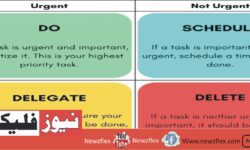
You’re facing miscommunication in a virtual project. How can you bridge the gap between team members?
آپ کو ایک ورچوئل پروجیکٹ میں غلط مواصلت کا سامنا ہے۔ آپ ٹیم کے ارکان کے درمیان فرق کو کیسے پُر کرسکتے ہیں؟
ورچوئل پروجیکٹس میں غلط کمیونیکیشن سب سے بڑا چیلنج ہے۔ آپ شاید وہاں گئے ہوں گے—لوگ ڈیڈ لائن سے محروم ہیں، کاموں کو غلط سمجھتے ہیں، یا وقت پر جواب نہیں دیتے۔ ورچوئل ٹیم ہڈلز اکثر ایسا محسوس کر سکتے ہیں کہ ہر کوئی ایک مختلف زبان بول رہا ہے، جس سے آپ مایوس اور منقطع ہو گئے ہیں۔
لیکن اس سے نکلنے کا ایک راستہ ہے۔ آئیے دوبارہ غور کریں کہ ہم ڈیجیٹل مواصلات تک کیسے پہنچتے ہیں۔ صرف ٹیک یا فاصلے کو مورد الزام ٹھہرانے کے بجائے، ہمیں اصل وجہ میں گہرائی میں ڈوبنے کی ضرورت ہے۔ ورچوئل ٹیمیں اکثر ترجمے میں کیوں کھو جاتی ہیں؟ اور ہم اسے کیسے ٹھیک کر سکتے ہیں؟
نمبر1 : توقعات کو واضح کریں، ہمیشہ
مفروضے پیداواری صلاحیت کو ختم کر دیتے ہیں۔ سب سے بڑا کمیونیکیشن گیپ اس وقت ہوتا ہے جب ٹیم کے اراکین سوچتے ہیں کہ وہ ایک دوسرے کو سمجھتے ہیں، لیکن حقیقت میں، وہ ایک ہی صفحے پر نہیں ہیں۔ اس کو حل کرنے کے لیے، سب کچھ واضح کریں۔ مخصوص ہو.
کام تفویض کرتے وقت، صرف یہ نہ کہیں، ‘آئیے جمعہ تک یہ کام کر لیتے ہیں۔’ اس کے بجائے، خاکہ بنائیں کہ ‘ہو گیا’ کیسا لگتا ہے۔ اسے واضح، قابل عمل اقدامات میں تقسیم کریں۔ ڈیڈ لائن کی وضاحت کریں اور کون کس کے لیے ذمہ دار ہے۔ الجھن کی گنجائش نہ چھوڑیں۔ یہ سادہ تبدیلی اس بات کو یقینی بناتی ہے کہ ہر کوئی منسلک ہے۔
نمبر2 : صحیح گفتگو کے لیے صحیح ٹولز استعمال کریں
تمام ٹولز برابر نہیں ہوتے۔ کچھ ٹیمیں ای میلز یا سلیک پیغامات کے ذریعے ہر چیز کو حل کرنے کی کوشش کرتی ہیں۔ لیکن ہر بات چیت چیٹ باکس میں نہیں ہوتی۔ پیچیدہ بات چیت کے لیے، ویڈیو کال پر جائیں۔ تفصیلی ہدایات کے لیے ای میل کا استعمال کریں۔
فوری اپ ڈیٹس کے لیے چیٹ جاری رکھیں۔ جب ہم کام کے لیے غلط ٹولز کو مجبور کرتے ہیں تو غلط مواصلت ہوتی ہے۔ تو اسے مکس کر لیں۔ پہچانیں کہ متن سے آواز میں، اور آواز سے ویڈیو میں کب جانا ہے۔ کلید ہر ایک ٹول کو استعمال کرنا ہے جہاں یہ سب سے زیادہ وضاحت کا اضافہ کرتا ہے۔
نمبر3 : مختلف پلیٹ فارمز پر بکھرے ہوئے سچائی کی معلومات کا ایک واحد ذریعہ بنائیں
تباہی کا ایک نسخہ۔ ایک پیغام سلیک پر، دوسرا ای میل پر، فائلیں گوگل ڈرائیو پر — ٹریک کھونا آسان ہے۔ اسے ٹھیک کرنے کے لیے، سچائی کا ایک واحد ذریعہ بنائیں۔ کلک اپ، عام تصور، یا عام تصور جیسے پروجیکٹ مینجمنٹ ٹول کا استعمال کریں جہاں ہر کوئی ایک جگہ پر اپ ڈیٹس، کام اور ٹائم لائنز دیکھ سکے۔ ایک مرکزی پلیٹ فارم ہونے کا مطلب ہے کہ کوئی بھی لوپ سے باہر نہیں ہے۔ یہ آگے پیچھے کاٹتا ہے اور اس بات کو یقینی بناتا ہے کہ ہر کوئی ایک ہی اسکرپٹ کی پیروی کر رہا ہے۔
نمبر4 : فعال سننے کو فروغ دیں
ٹیم کے اراکین ورچوئل میٹنگز کے دوران کتنی بار سنتے ہیں؟ بہت سے لوگ اس بارے میں سوچ رہے ہیں کہ وہ آگے کیا کہیں گے، یا اس سے بھی بدتر، ملٹی ٹاسکنگ۔ غلط مواصلت اکثر پوری طرح نہ سننے کی وجہ سے ہوتی ہے۔ ورچوئل میٹنگز کے دوران فعال سننے کی حوصلہ افزائی کریں۔
ٹیم ممبران سے کہو کہ وہ افہام و تفہیم کی تصدیق کے لیے اہم نکات کو دہرائیں۔ یہ سب سے پہلے غیر آرام دہ محسوس کر سکتا ہے، لیکن یہ سب کو مشغول کرنے اور موجود رہنے پر مجبور کرتا ہے۔ جب لوگ صحیح معنوں میں سن رہے ہوتے ہیں تو غلط مواصلت کم ہوتی جاتی ہے۔
نمبر5 : باقاعدگی سے ورچوئل بات چیت کو سمجھنے کے لیے چیک کریں
جس میں باڈی لینگویج کے ایسے لطیف اشاروں کی کمی ہوتی ہے جو ہم آمنے سامنے ملاقاتوں میں حاصل کرتے ہیں۔ اس سے یہ جاننا مشکل ہو جاتا ہے کہ آیا کوئی مکمل طور پر سمجھتا ہے۔ تو پوچھو۔ فرض نہ کرو۔ ہر میٹنگ کے اختتام پر، ہر ایک سے اپنے ٹیک ویز کا خلاصہ کرنے کو کہیں۔
یہ کافی نہیں ہے کہ اس کے ساتھ سر ہلا کر کہے، ‘سمجھ گیا۔’ آپ کو حقیقی تصدیق کی ضرورت ہے کہ ہر کوئی جانتا ہے کہ کیا متوقع ہے۔ تفہیم کی جانچ کرنے سے خلاء کو دور کرنے میں مدد ملتی ہے اس سے پہلے کہ وہ حقیقی مسائل بن جائیں۔
نمبر6 : شفاف تاثرات کی حوصلہ افزائی کریں
جب غلط مواصلت ہوتی ہے، الزام تراشی اور خاموشی حالات کو مزید خراب کر سکتی ہے۔ اس کے بجائے، شفاف تاثرات کی ثقافت کو فروغ دیں۔ اپنی ٹیم کو بتائیں کہ اگر وہ کسی چیز کے بارے میں الجھن میں ہیں یا غیر یقینی ہیں تو بات کرنا ٹھیک ہے۔
ایک محفوظ جگہ بنائیں جہاں ہر کوئی وضاحت طلب کرنے میں آسانی محسوس کرے۔ یہ کھلا پن چھوٹی غلط فہمیوں کو بڑے مسائل میں تبدیل ہونے سے روک سکتا ہے۔ ایک ٹیم جو بولتی ہے وہ ٹیم ہے جو مؤثر طریقے سے بات چیت کرتی ہے۔
نمبر7 : باقاعدگی سے چیک اِنس سیٹ کریں
ہر چیز کو حل کرنے کے لیے ایک ہفتہ وار میٹنگ پر انحصار نہ کریں۔ ورچوئل ٹیموں کو جڑے رہنے کے لیے باقاعدہ چیک ان کی ضرورت ہوتی ہے۔ ان کا رسمی یا طویل ہونا ضروری نہیں ہے۔ فوری 15 منٹ کا اسٹینڈ اپ حیرت انگیز کام کر سکتا ہے۔
ان چیک انز میں، پیش رفت، رکاوٹوں، اور کسی بھی مواصلاتی مسائل پر توجہ دیں۔ کیا ہدایات واضح ہیں؟ کیا سب ایک ساتھ ہیں؟ یہ فوری سیشن منصوبے کو پٹڑی سے اتارنے سے پہلے کسی بھی غلط فہمی کو جلد از جلد پکڑنے کا بہترین طریقہ ہیں۔
نمبر8 : ثقافتی حساسیت کو گلے لگائیں
ورچوئل ٹیمیں اکثر عالمی ہوتی ہیں۔ اس کا مطلب ہے مختلف ٹائم زونز، مختلف مواصلاتی انداز، اور مختلف ثقافتی اصول۔ جو چیز ایک ثقافت میں براہ راست اور واضح نظر آتی ہے اسے دوسری ثقافت میں بدتمیز یا مبہم سمجھا جا سکتا ہے۔ اپنی ٹیم کو ثقافتی اختلافات سے آگاہ کریں۔
ہمدردی اور افہام و تفہیم کی حوصلہ افزائی کریں۔ جب ٹیم کے اراکین ایک دوسرے کے پس منظر کی تعریف کرتے ہیں، تو بات چیت ڈرامائی طور پر بہتر ہوتی ہے۔ یہ صرف الفاظ کے بارے میں نہیں ہے؛ یہ ان کے پیچھے نیت کے بارے میں ہے۔
نمبر9 : متجسس رہیں اور قابل اطلاق
مواصلات جامد نہیں ہے۔ پچھلے مہینے جو کام کیا وہ آج کام نہیں کر سکتا۔ اس بارے میں متجسس رہیں کہ آپ اپنی ٹیم کے اندر مواصلت کو کیسے بہتر بنا سکتے ہیں۔ نئے ٹولز، حکمت عملیوں اور فیڈ بیک کے مطابق بنائیں۔
جو ٹیمیں تیار ہوتی ہیں وہ ٹیمیں ہوتی ہیں جو ترقی کرتی ہیں۔ دور دراز ٹیموں کی مؤثر طریقے سے قیادت کریں۔
ورچوئل ٹیموں میں باٹم لائن
مِس کمیونیکیشن کو پروجیکٹ قاتل نہیں ہونا چاہیے۔ توقعات کو واضح کر کے، صحیح ٹولز کا استعمال کرتے ہوئے، فعال طور پر سننے، اور کھلے پن کا کلچر بنا کر، آپ ٹیم کے اراکین کے درمیان خلیج کو پر کر سکتے ہیں۔
یہ صرف معلومات کے تبادلے سے زیادہ ہے—یہ ایک دوسرے کو سمجھنے کے بارے میں ہے۔ اگلی بار جب آپ کی ورچوئل ٹیم ترجمے میں کھوئی ہوئی محسوس کرے تو اپنے نقطہ نظر کو روکیں اور دوبارہ سوچیں۔ آپ کس طرح بہتر بات چیت کر سکتے ہیں، ایک ساتھ؟








